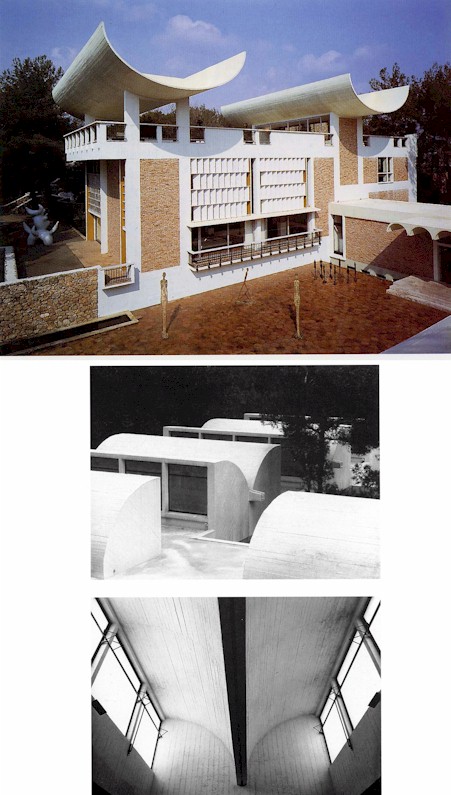
Sep '06 - Dec '09
A series of questions that have risen in my Situating the Modern class:
-How did the vernacular influence modernism? How does that square off with the modernist claim of a break with the past and tradition?
-What do these buildings have to teach us about it?
Corb - Villa Mandrot:

Sert - Miro's atelier:
Sedad Eldem - Social Security Agency:
-Why are the issues of modernism, national identity, and the vernacular more often raised when looking at the architecture of 'modern' architects in developing countries? (barragan in mexico, correa in india, corb in chandigarh, neimeyer in brazil, kahn in bangladesh, porro in cuba, etc...)
Today I wrote down this quote from an intra-war period italian architect:
"The national (vernacular) is about climate and ethics, the international (modern) is about technology"
Finally, as a reaction to that quote, with environmentally engaging building design becoming more important, and in many places the law, does it mean we should take a new serious look at the vernacular (through the lense of the modern?) for contemporary design?



9 Comments
is aalto considered modern?
ahhh.... the debate of international style and regionalism, MoMA vs. Mumford of the 40's and 50's
a more appropriate question might be, should we take a serious look at modern through the lens of the venacular?
(i guess it depends where you stand, i flip flop back and forth depending on the day / whatever i am currently reading)
if i remember correctly:
aalto was considered to be on the regionalist side of the debate. not specifically opposed to Corbusier, Gropius, Johnson - but not with them either.
Yes, but I have heard the argument that Aalto should really be put in the "other modernism" from developing nations category.
Aalto himself said that the architectural revolution 'began with enthusiasm and ended with dictatorship'. more on this here: http://www.findarticles.com/p/articles/mi_m3575/is_n1187_v199/ai_18068970
But I agree that Aalto is good to look at.
yes but what about the vehicular vernacular???

more about this first fiberglass trailer here.
Dymaxion baby!
Great post, +q. Here's my question: how is it that sometimes vernacular modernism looks to styles that come from outside its own national borders for inspiration? And for this, it is helpful to look at Scandinavians. For example, both Aalto's Säynatsälo Town Hall and Jørn Utzon's Fredensborg Housing Development look to Italian hillside villas for their inspiration. And what about vernacular modernisms that are obviously historcizing gestures? Here, for example, one may think of James Stirling's Preston Housing Scheme, which (at least according to one critic) is a form of diluted neo-Victorianism.
was international style ever any more than an idea?
yes: in the hands of derivative architects, a kind of modernism was copied everywhere - into places for which it was not intended and not appropriate.
no: among the leaders of modernism, the iconic structures we heard about were, imo, always subject to and products of local conditions.
while we may not think of the bauhaus as 'vernacular', the fact that they were not able to build it of concrete as intended and had to have local masons build it affected the design in some ways that make it much more tied to its particular spot of ground.
it's hard for me to look at ronchamp and imagine that corb could not have been aware of and intrigued by the dolmens - not only a vernacular form but an archetypal 'shelter'.
even villa savoye was likely designed to accommodate a renault, not a ford.
these projects weren't international. they were specific and local. their influence, however, was spread internationally. the quality of the results depending on the skill of the copyist.
i am quite amused the way usage of the word vernacular is entering into even structures which understood to have been built under influence of modernism...
Block this user
Are you sure you want to block this user and hide all related comments throughout the site?
Archinect
This is your first comment on Archinect. Your comment will be visible once approved.